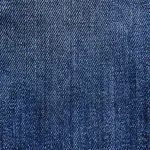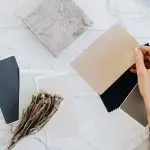When it comes to choosing the best fabric tape, you want to ensure you're picking the adhesive that stitches your projects together like a seamless thread.
Understanding the different types of fabric tape, considering durability, adhesion strength, versatility, weather resistance, ease of use, and budget-friendly options are crucial in making an informed decision.
This concise guide will provide you with the mastery you seek in selecting the perfect fabric tape for your needs.
Key Takeaways
- Consider the different types of fabric tape available, such as low-tack adhesives for delicate fabrics and high-tack adhesives for heavy-duty fabrics.
- Prioritize durability and material strength, including weather resistance for outdoor applications and longevity and wear resistance.
- Look for fabric tapes specifically designed to withstand weather elements and have high adhesive strength.
- Choose versatile fabric tapes that are compatible with different projects and surfaces, offering multi-surface adhesive capabilities.
Understanding Fabric Tape Types
When choosing fabric tape, you should consider the various types available to find the best option for your specific needs. Understanding adhesion and fabric tape compatibility is crucial in making an informed decision.
Fabric tapes come in various adhesion strengths, ranging from low-tack to high-tack adhesives. Low-tack adhesives are suitable for delicate fabrics as they provide a secure hold without damaging the material. On the other hand, high-tack adhesives are ideal for heavy-duty fabrics or materials that require a strong, long-lasting bond.
It's essential to consider the compatibility of the fabric tape with the material you intend to use it on. Some fabric tapes are designed specifically for cotton, while others may be more suitable for synthetic fabrics. Understanding the compatibility ensures that the tape will adhere effectively without causing any damage or leaving residue.
Considerations for Durability
When choosing fabric tape, it's crucial to consider the material strength to ensure it can withstand the intended use.
Additionally, weather resistance is important for outdoor applications to prevent damage from elements like rain and UV rays.
Lastly, evaluating longevity and wear resistance will help you select a durable fabric tape that will hold up over time.
Material Strength Matters
To ensure durability, consider the material strength of fabric tapes when choosing the best option for your project. Material durability is crucial for withstanding various conditions, so look for fabric tapes made from high-quality materials such as nylon, polyester, or cotton. These materials offer excellent resistance to wear and tear, ensuring the tape remains intact for an extended period.
Additionally, adhesive strength is a key factor in material strength. A strong adhesive ensures that the fabric tape securely bonds to different surfaces, providing long-lasting adhesion. When evaluating fabric tapes, prioritize those with a high level of adhesive strength to guarantee that your project stays intact.
Weather Resistance Is Important
Consider the climate and environmental conditions where you plan to use the fabric tape. Outdoor performance is crucial when choosing fabric tape, especially if it will be exposed to extreme conditions. Look for fabric tapes that are specifically designed to withstand weather elements such as rain, snow, UV rays, and temperature fluctuations. These tapes are often made with durable materials and special adhesives that can endure harsh outdoor environments.
When selecting a fabric tape for outdoor use, prioritize weather-resistant features to ensure its longevity and reliability. Understanding the weather resistance capabilities of the fabric tape will help you make an informed decision and prevent the need for frequent replacements due to weather-related wear and tear.
Longevity and Wear Resistance
To ensure the fabric tape's durability and longevity, you should prioritize wear resistance and seek out tapes specifically designed to withstand frequent use and heavy wear and tear. When selecting fabric tape, it's essential to consider its wear resistance, as this directly impacts its longevity and durability. Here's a comparison of wear resistance for different fabric tapes:
| Fabric Tape Type | Wear Resistance Level |
|---|---|
| Standard fabric tape | Low |
| Reinforced fabric tape | Medium |
| Heavy-duty fabric tape | High |
Choosing a fabric tape with high wear resistance will ensure that it maintains its adhesive properties and structural integrity over time, even under demanding conditions. Prioritizing wear resistance is crucial for maximizing the longevity and effectiveness of the fabric tape for your specific application.
Adhesion Strength and Application
When choosing the best fabric tape, assess the adhesion strength and application to ensure it meets your specific needs.
- Adhesion Strength: Look for fabric tapes with high adhesion strength to ensure they'll stay in place, even in high-stress applications. This is crucial for ensuring the tape maintains its bond over time, offering long-lasting durability.
- Application Techniques: Consider the application techniques required for the fabric tape. Some tapes may need heat or pressure for proper adhesion, while others may offer a simple peel-and-stick application. Understanding the application process will help you choose the tape that aligns with your needs and capabilities.
- Material Compatibility: Take into account the materials the fabric tape will be adhering to. Ensure the tape is compatible with the specific fabric or surface you intend to use it on. Compatibility will impact the tape's adhesion performance and overall effectiveness.
Assessing adhesion strength, durability, application techniques, and material compatibility will help you choose a fabric tape that meets your specific requirements for a reliable and long-lasting solution.
Versatility for Different Projects
When choosing fabric tape, it's important to consider its compatibility with different projects and surfaces. Look for options that offer multi-surface adhesive capabilities, ensuring versatility for various applications.
Additionally, consider the tape's resistance to weather and temperature changes to ensure it can withstand different conditions.
Project Compatibility and Uses
Consider the specific requirements of your project when choosing fabric tape. Compatibility with the project material and the intended use is crucial in ensuring the effectiveness of the tape. Here are three key factors to consider for project compatibility and uses:
- Material Compatibility: Ensure that the fabric tape is suitable for use on the specific material of your project, such as cotton, polyester, or nylon. Using tape that's compatible with the material will provide a secure and durable bond.
- Application Method: Consider the application method required for your project. Some fabric tapes are designed for iron-on application, while others may require sewing or adhesive application. Choose the tape that aligns with your project's application method.
- Project Suitability: Evaluate the specific needs of your project, whether it involves hemming, patching, or crafting. Select fabric tape that's designed to address the specific requirements of your project for optimal results.
Multi-Surface Adhesive Options
For versatility across different projects, consider fabric tapes with multi-surface adhesive options. This adhesive versatility ensures that you can use the fabric tape for a wide range of projects, from crafting and sewing to household repairs. When considering surface application, look for fabric tapes that can adhere to a variety of materials such as fabric, plastic, metal, and wood. The ability to stick to different surfaces with ease makes these tapes a valuable addition to your toolkit. Whether you're working on a fabric-based project or need to secure items to various surfaces, multi-surface adhesive options offer the flexibility you need.
When selecting fabric tape, prioritize options that provide reliable adhesion across diverse materials for maximum utility.
Weather and Temperature Resistance
Ensure that the fabric tape you choose offers weather and temperature resistance to maintain its performance across various projects.
Look for these key features to ensure the fabric tape meets your needs:
- Outdoor Application: Select fabric tape that can withstand outdoor elements such as rain, sunlight, and temperature variations. This will ensure that your projects remain intact and secure even when exposed to the elements.
- Extreme Conditions: Opt for fabric tape that can endure extreme conditions like high heat or freezing temperatures. This ensures that the tape remains reliable and effective regardless of the project's setting or environment.
- Versatility: Choose fabric tape that's versatile enough to be used in a wide range of temperatures, from hot to cold, without compromising its adhesion or performance. This versatility makes the tape suitable for diverse projects and applications.
Weather and Water Resistance
When selecting fabric tape, prioritize weather and water resistance to ensure long-lasting durability and protection. Weatherproofing techniques are crucial for outdoor applications, and choosing a fabric tape with excellent weather and water resistance is essential. Look for fabric tapes that are specifically designed to withstand a variety of weather conditions, including rain, snow, and extreme temperatures. These tapes are often made with materials that repel water and have strong adhesive properties to ensure they stay in place even in challenging weather.
For outdoor applications, it's important to select a fabric tape that can withstand exposure to the elements without deteriorating. Look for tapes that are resistant to UV rays, as prolonged exposure to sunlight can cause some materials to weaken or degrade over time. Additionally, consider the tape's ability to repel water and resist mold and mildew growth, as these factors can significantly impact its durability in outdoor settings.
Ease of Use and Application
To ensure a smooth application process, you'll want a fabric tape that offers easy handling and straightforward use. When considering ease of use and application, focus on the following key factors:
- Ease of Removal: Look for fabric tapes that offer easy removal without leaving behind sticky residue or causing damage to the fabric. A tape that peels off cleanly can save you time and effort during the removal process.
- Adhesive Strength: Opt for a fabric tape with a strong adhesive that provides a secure bond without causing fabric damage. A balance between strong adhesion and gentle removal is crucial for a hassle-free application experience.
- User-Friendly Design: Choose a fabric tape that's user-friendly, featuring easy-to-tear capabilities and smooth application without wrinkling or bunching. A tape that can be easily handled and applied will enhance the overall user experience.
When selecting a fabric tape, prioritize ease of removal, adhesive strength, and user-friendly design to ensure a seamless application process. These factors will contribute to a successful and stress-free experience when using fabric tape for various applications.
Budget-Friendly Options
To find budget-friendly options for fabric tape that align with your needs, look for tapes that offer cost-effective alternatives, ensuring economical choices without compromising on quality and performance.
When considering budget-friendly fabric tapes, prioritize options that provide a balance between affordability and functionality. Look for multipurpose fabric tapes that can serve various needs, reducing the need to purchase multiple specialized tapes.
Additionally, consider bulk purchasing options or larger rolls, as they often offer a lower cost per unit length.
Selecting fabric tapes with strong adhesive properties can also contribute to cost-effectiveness by ensuring that the tape remains securely in place, reducing the likelihood of reapplication or the need for additional tape.
Furthermore, opt for fabric tapes that are durable and long-lasting, as this can minimize the frequency of tape replacement, ultimately saving you money in the long run.
Frequently Asked Questions
Can Fabric Tape Be Used on Delicate Fabrics Like Silk or Lace?
Yes, fabric tape can be used on delicate fabrics like silk or lace. To ensure best results, test a small, inconspicuous area first. Gently apply the fabric tape and press it firmly to adhere without causing damage.
Is Fabric Tape Suitable for Outdoor Use on Items Like Tents or Camping Gear?
For outdoor use, fabric tape durability is key. When comparing fabric tape alternatives, look for ones specifically designed for outdoor applications. Consider factors like water resistance, UV protection, and strong adhesive for a reliable choice.
Can Fabric Tape Be Used to Repair Seams on Leather or Vinyl Items?
When repairing leather or vinyl items, fabric tape can be a suitable option. It's important to choose a tape specifically designed for delicate fabrics. Consider factors such as washing durability, moisture exposure, and heat resistance.
Are There Any Fabric Tapes That Are Specifically Designed for Use in High-Heat Environments?
When considering fabric tape for high heat applications, look for options designed for durability in extreme temperatures. Check for tapes made with heat-resistant materials to ensure they can withstand the specific demands of high-heat environments.
Can Fabric Tape Be Safely Used on Items That Will Be Regularly Washed or Exposed to Moisture?
Fabric tape can be safely used on items that will be regularly washed or exposed to moisture. For medical use, look for fabric tape with hypoallergenic properties. For automotive repair, consider a waterproof fabric tape for durability.
- How Does Ring Spun Cotton Affect Garment Fit and Shape Retention? - August 13, 2024
- What Are the Challenges in Producing Ring Spun Cotton? - August 13, 2024
- Is Ring Spun Cotton Suitable for Plus-Size Clothing? - August 13, 2024







